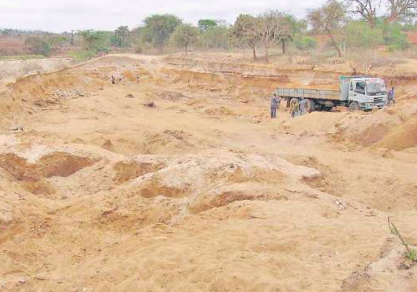
It will be illegal to transport sand without a permit from the National Environment Management Authority.
This is after the government introduced stringent regulations in a bid to control wanton sand harvesting.
Sand mining has led to the drying of aquifers, riverbank and bed erosion, water and air pollution and loss of biodiversity.
The government has introduced Environmental Management and Coordination (Sand Harvesting) regulations, 2024.
“The application [for permit] shall be accompanied by proof of the Environmental Impact Assessment License showing the source of the sand being transported; personal details of the applicant; details of mode of transportation of the sand; and the fee specified in the Fourth Schedule,” part of the regulations says.
Sand transportation permit processing fee is Sh3,000.
Nema will consider the application within five working days after it is lodged. Upon approval, Nema will issue the applicant with a permit which will be valid for a period not exceeding three months from the date of issuance.
Where sand is transported in a vehicle, the driver will retain physical custody of the permit while the sand is in transit.
The holder of a permit issued under this regulation will present it on demand for the inspection and verification by an environmental inspector, police officer or an authorised officer.
The permit holder will transport sand only between 6 am and 6 pm
The regulations say any person who contravenes the provisions commits an offence and shall, on conviction, be liable to the penalty provided under section 144 of Environmental Management and Co-ordination Act, 1999.
The EMCA Act stipulates that any person who contravenes any of the provisions of regulations, for which no penalty is stipulated, commits an offence and is liable, upon conviction, to a fine not more than Sh350,000 or to imprisonment for a term not exceeding 18 months or to both.
The proponent shall be responsible for rehabilitation of designated sand harvesting sites and their adjacent environment, where relevant, in accordance with the rehabilitation plan submitted with the Environmental Impact Assessment report. UN Environment Programme says sand is the world’s second most used commodity, after water.
UNEP says marine sand is a staple in construction, but the world’s
reserves are being depleted at rates
never seen before.










